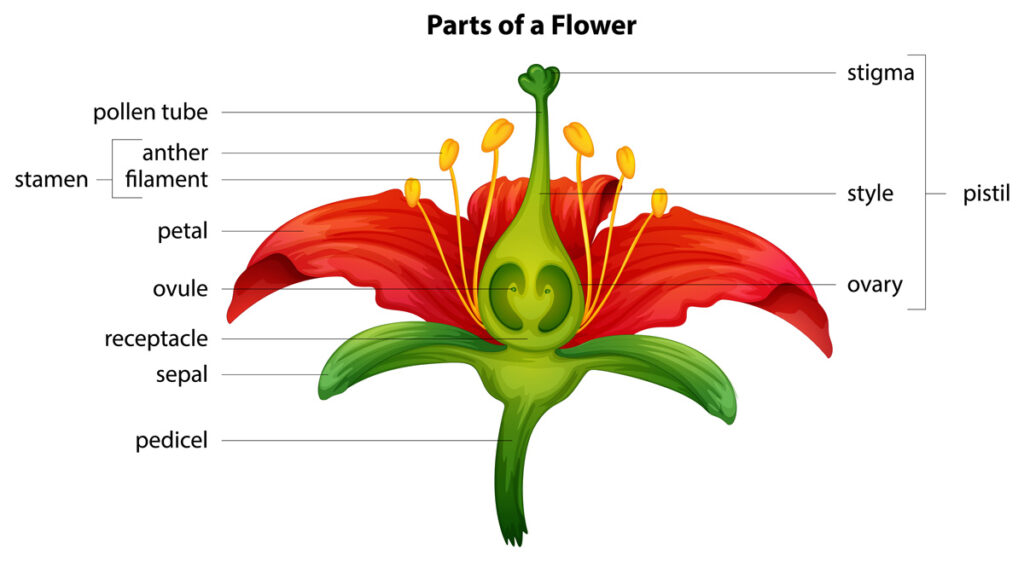The Wonderful World of Pollination: How Flowers Make Babies
Imagine you’re in a beautiful garden, surrounded by vibrant flowers of all shapes and sizes. Have you ever wondered how these flowers create new generations of themselves? Well, they have a fascinating process called pollination, and it’s a bit like nature’s matchmaking service!
What’s Pollination?
At its core, pollination is like a romantic rendezvous for plants. It’s the act of transferring tiny pollen grains from one part of a flower to another. These pollen grains carry important genetic information, like a love letter, and they help plants make seeds, which are like their babies.
Parts of a Flower
To understand pollination, you need to know a bit about the parts of a flower:
- Anther: This is like the boy part of the flower, where pollen is produced.
- Stigma: Think of this as the girl part of the flower, which receives the pollen.

The Love Connection
Now, here’s where the magic happens. For a flower to make seeds, it needs pollen from another flower of the same type. Flowers can’t just walk over to each other, so they rely on special helpers called “pollinators.”
Meet the Matchmakers
Pollinators are like Cupid in the plant world. They can be all sorts of creatures, like birds, insects (like bees and butterflies), bats, or even the wind. These little matchmakers visit flowers for various reasons.
- Collecting Pollen: Some pollinators gather pollen for food because it’s packed with nutrients, like a protein shake for them.
- Sipping Nectar: Others are after sweet nectar, a sugary liquid inside flowers, and while sipping, they unintentionally pick up pollen.
The Pollen Journey
As pollinators move from flower to flower, they may accidentally carry pollen from one flower’s anther to another’s stigma. It’s like they’re delivering those love letters we mentioned earlier. When this happens, it’s the start of something beautiful!
Making Seeds
Once pollen lands on a stigma, something amazing can occur. The pollen can “germinate,” which means it starts growing a tiny pollen tube. This tube travels down into the ovule of the plant, where it can fertilize the flower.
Outcomes of Pollination
The journey doesn’t always end in a plant romance novel’s happy ending, though:
- Successful Fertilization: Sometimes, the pollen tube successfully fertilizes the flower, leading to the growth of seeds and fruit. It’s like a plant pregnancy!
- Partial Fertilization: In some cases, the flower might only be partially fertilized, and its fruit or seeds don’t develop fully.
- No Fertilization: Unfortunately, there are times when pollination fails, and the plant doesn’t reproduce at all.
Types of Plants
Plants come in two main types when it comes to pollination:
- Self-Pollinating: Some plants can fertilize themselves. They don’t need help from matchmakers; they’re like solo artists in the world of pollination.
- Cross-Pollinating: Others need the assistance of pollinators (like bees) or the wind to carry pollen to another flower of the same type. They’re like plants looking for love connections.
In the end, pollination is a fantastic and essential process that keeps our world green and blooming with life. So, next time you see a bee buzzing around a flower or a butterfly fluttering by, remember, that they might just be playing a part in one of nature’s most beautiful love stories – the story of pollination.
Also Read: Scientists Warn Of Mass Extinction Threat To Branches On The Tree Of Life






